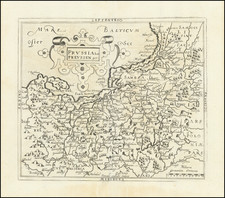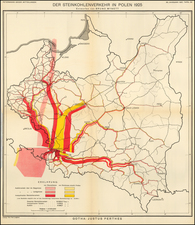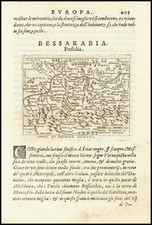Decorative genealogical tree, illustrating the family of Sigismund III of Poland and Sweden.
"Reges Poloniae Potentiss Poloniae et Sueciae etc. Regi Sigismundo III D.D.D." presents a meticulous genealogical tapestry of Sigismund III, a sovereign of profound historical significance, encapsulating the dynastic lineage of Poland and Sweden. This intricate tableau, adorned with regal portraits and a panoramic view of Grodno, charts the ancestral roots of Sigismund III, tracing the familial narrative from the distant past of 886 A.D. to the union with Anna and Maria of Austria, affirming the enduring legacy of a monarchy that shaped the course of European history.
The genealogy commences with the earliest ancestors, unfolding a narrative that stretches back to the 9th century. Figures like Plastus, a rustic man, are chronicled with succinct epitaphs that denote their lifespan around the year 886, providing a glimpse into the early foundations of this royal lineage. The depiction not only serves as a historical ledger but also as a visual representation of the passage of time, where each individual is a pivotal link in the continuity of the dynasty.
Advancing through the centuries, the genealogical branches intertwine with European nobility, marking significant alliances and the rise of the monarchy. The 10th century introduces monarchs such as Miecislaus I, whose reign and posterity played crucial roles in the formation of the Polish state.
At the pinnacle of the tree, we find Sigismund III, born in 1566, whose crowning in 1587 signified the zenith of a sovereign lineage that had weathered centuries of transformation. His marriage into the Austrian Archduchy underscores the strategic marital alliances that were instrumental in shaping the geopolitical landscape of the time. The inclusion of his wife and son's portraits alongside his own elevates the document from mere record to a celebration of dynastic prestige and succession.
The genealogical record is further enriched by a coat of arms at the top left, and coats of arms for the family and the city of Grodno further down. The image of the Crown, scepter, quill and wreath suggests the role of the King as leader, peacemaker and wise sovereign.
Below, the detailed landscape of Grodno serves not only as a geographical anchor but also as a testament to the territorial domain and the seat of power that underpinned the reign of Sigismund III. This cityscape, etched with the minutiae of everyday life, provides a contrast to the lofty heights of the genealogical branches, grounding the royal narrative in the reality of its time and space.
Sigismund III
Sigismund III Vasa, born on June 20, 1566, reigned as King of Poland and Grand Duke of Lithuania from 1587 to 1632, and as King of Sweden from 1592 to 1599. His rule is characterized by his attempts to strengthen the monarchy and consolidate his realms, though often leading to internal conflicts and external wars.
He was the eldest son of John III of Sweden and his wife Catherine Jagiellon, which provided him a claim to both the Swedish and Polish thrones. Sigismund's reign was marked by his staunch Catholicism in a predominantly Protestant Sweden and a religiously diverse Poland-Lithuania.
Sigismund's tenure as King of Sweden was turbulent, culminating in his deposition during the Linköping Bloodbath in 1599, an event that resulted from a conflict with his Protestant uncle, Duke Charles, who eventually succeeded him as Charles IX of Sweden.
His reign in Poland-Lithuania was notable for the ongoing conflict with the Ottoman Empire, the prolonged war with Sweden known as the Polish-Swedish War, and his efforts to strengthen royal authority, which often clashed with the nobility's privileges, embodied in the Polish-Lithuanian Commonwealth's unique system of "Golden Liberty."
Sigismund was also a patron of the arts and a supporter of cultural development, which flourished during his reign. His rule saw the construction of significant architectural projects, including the completion of the Royal Castle in Warsaw.










![[Finland] Postkarte von Finnland und Norrland / Tabula qua Curus Veredarii Per Pinnoniame et Norrlandiam](https://storage.googleapis.com/raremaps/img/small/57036.jpg)
![[ Marshal Oudinot Copy ] Landes-Grenze zwischen dem Königreich Preussen und dem Herzogthum Warschau nach der am 10ten November 1807, dem Tilsiter Friedens Tractat vom 9ten Juli 1807 gemäss, zu Elbing abgeschlossenen Convention und der im Jahre 1808 darauf erfolgten örtlichen Begrenzung, als Supplement, der von Schröttersche](https://storage.googleapis.com/raremaps/img/small/99041.jpg)


![[Spitzbergen & Wiches Lande]](https://storage.googleapis.com/raremaps/img/small/61990.jpg)